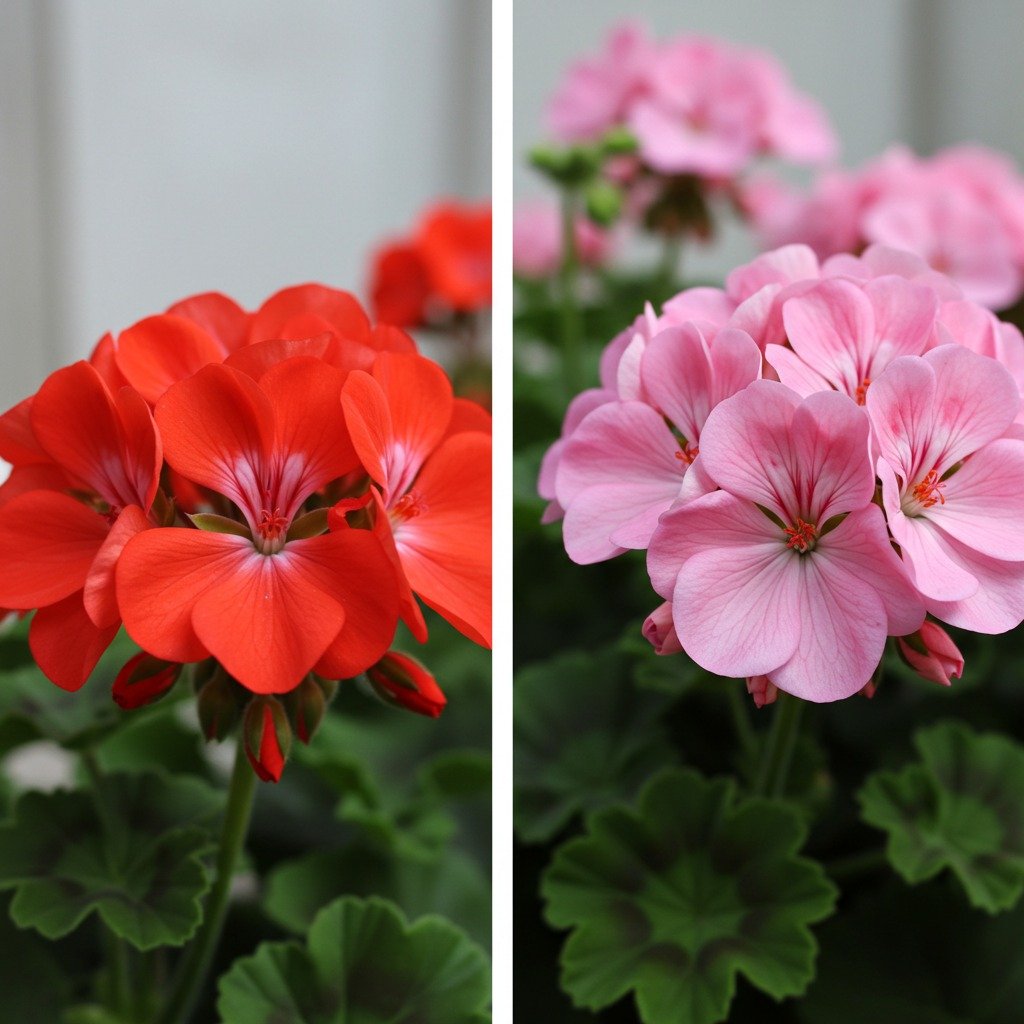How to Revive an Old, Frail, and Overgrown Geranium in Autumn
Geraniums are beautiful and resilient plants, but over time, they can become overgrown, leggy, or lose their lower leaves, making them appear frail and unattractive. Fortunately, with proper care, including pruning and natural, nutrient-rich top dressings, you can completely rejuvenate your geranium, encouraging lush growth and vibrant flowering. In this guide, we will walk through the essential steps to restore your geranium’s beauty and vitality.
Step 1: Pruning for Rejuvenation
The first and most crucial step in reviving an aging geranium is pruning. Proper pruning stimulates the growth of new side shoots, buds, and flowers, making the plant more compact and bushy.
- When to Prune: Autumn is the best time to prune an overgrown geranium.
- How to Prune:
- Use a sharp, sterilized tool to cut all shoots down to about 15 cm from the ground.
- If your geranium has grown very long and leggy with a single main stem, it is especially important to cut it back.
- Don’t worry if no leaves remain after pruning—this is normal, and the plant will soon grow back healthier.
- Rooting the Cuttings:
- Place the removed shoots in water to encourage rooting for propagation.
- To prevent infection, dust the cut ends with cinnamon powder, which has natural antifungal properties.
Step 2: Boosting Recovery with Succinic Acid
After pruning, the geranium will need help to recover and start new growth. Succinic acid is an excellent natural stimulant that enhances plant immunity and promotes lush flowering.
- Preparation: Dissolve 200 mg of succinic acid in 1 liter of water.
- Application: Spray the solution onto the remaining plant, ensuring full coverage of any leaves and stems.
- Benefits:
- Strengthens the plant’s immune system.
- Speeds up recovery after pruning.
- Encourages brighter and more abundant blooms.
Step 3: Adjusting Care After Pruning
To prevent stress on the pruned geranium, follow these care adjustments:
- Avoid Direct Sunlight: Place the plant in a shaded area, as direct sunlight may be too harsh during the recovery phase.
- Reduce Watering: Since the plant has fewer leaves and lower water demand, reduce watering frequency to prevent root rot.
- Rest Period: Leave the plant undisturbed for 10 days to allow the lateral buds to wake up and start new growth.
Step 4: First Feeding – Beet-Based Fertilizer
Once new shoots begin to emerge, it’s time to give the first top dressing to provide essential nutrients for growth.
- Why Beets? Beet-based fertilizer supplies nitrogen, phosphorus, potassium, and trace elements essential for lush flowering and healthy plant development.
- How to Prepare:
- Take two small beets and grate them (about 150 grams).
- Place the grated beets in a 1-liter jar.
- Fill the jar with warm water and close the lid.
- Let the mixture ferment in a warm place for 3-4 days.
- Application:
- After fermentation, dilute the solution 1:5 with clean water.
- Water the geranium under the root.
- Additional Tip:
- Mulching with Moss: Adding a layer of moss around the base of the plant helps retain soil moisture, which promotes healthy root development.
Step 5: Second Feeding – Onion Peel and Yeast Fertilizer
After 10 more days, the geranium should be visibly stronger with larger, greener leaves. To further enhance its growth and flowering potential, prepare a powerful fertilizer using onion peel and yeast.
- Why Onion Peel? Rich in minerals, onion peel improves plant immunity and strengthens the root system.
- Why Yeast? Yeast contains amino acids and beneficial compounds that stimulate plant growth and flowering.
- How to Prepare:
- Take one handful of onion peel and place it in a 1-liter jar.
- Pour 1 liter of boiling water over the onion peel.
- Let the mixture steep for a few hours.
- Strain the liquid and set it aside.
- Add 1 teaspoon of yeast and 1 teaspoon of sugar to the strained liquid.
- Let the mixture ferment for a couple of hours.
- Application:
- Dilute the fermented mixture 1:2 with water.
- Pour under the root on moist soil.
Step 6: Enjoying the Results
After following these steps, the transformation in your geranium will be remarkable. By the third round of feeding, the plant will have:
- Grown noticeably stronger
- Developed lush, bushy foliage
- Produced numerous new buds
- Started an active flowering phase
Pruning combined with the right natural fertilizers can make even the most overgrown and frail geranium thrive again. Try this method and enjoy a beautifully rejuvenated plant with bright, long-lasting blooms!



